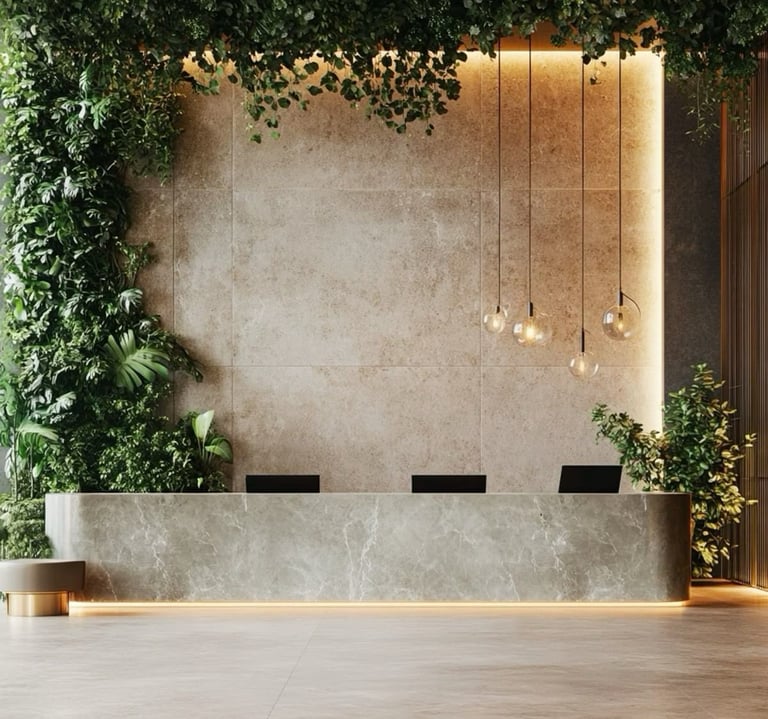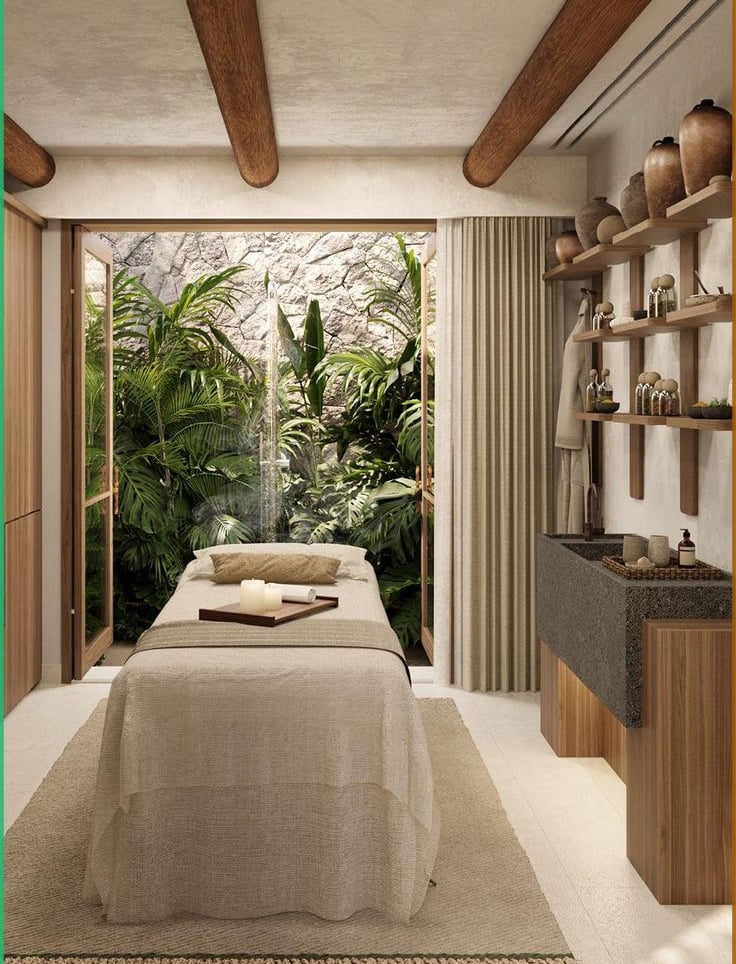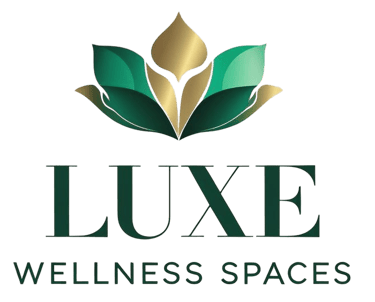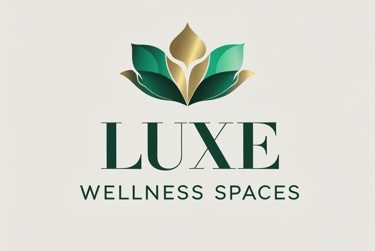Biophilic & Multi-Sensory Design Standards for Wellness Spaces
Translate nature into performance: light, air, acoustics, scent, materials, and way-finding that lower stress, extend dwell time, and elevate perceived value.
Daryn B
9/5/20254 min read


Designing a wellness space is not only about what people see. It is about what they hear, breathe, touch, smell, and intuit from the flow of the room. When you translate nature into a set of practical standards, you get spaces that feel calm, lengthen dwell time, and increase perceived value. Below is Luxe Wellness Spaces’ field-tested guide to biophilic and multi-sensory design that you can apply to spas, gyms, clinics, and wellness real estate.
Start with light, then layer the senses
Daylight is the anchor of biophilic design. Prioritise clear sightlines to sky and greenery, use sheer layers to soften glare, and balance with circadian-friendly electric light. In practice this means warm, low light in recovery zones, neutral white for treatment precision, and brighter task lighting at consultation desks. The fun fact here is simple, people consistently rate spaces with dynamic light and shadow as more natural and more comfortable. Soft indirect lighting that grazes textured walls adds visual depth without visual fatigue.
Air is the invisible luxury. Fresh air strategy begins with clean intake, quiet distribution, and low-VOC finishes. Add operable windows where possible, and place slow-moving ceiling fans in lounges to create a gentle breeze signal that the body reads as comfort. A subtle scent profile completes the picture. Citrus works well in arrival zones for clarity, resinous woods in relaxation areas for grounding. Keep scent levels consistent and dialed low so guests perceive ambience rather than perfume.
Control sound to create safety
Acoustic comfort is often the difference between a good experience and a great one. Aim for soft rooms rather than silent rooms. Mix absorbent ceiling panels with thick curtains, fabric wall panels, and upholstered seating to reduce flutter echo. Separate high-energy spaces like fitness studios from treatment rooms with buffer zones such as storage or circulation corridors. Water features can provide a natural masking layer in reception, but keep them gentle to avoid constant high-frequency splash.
Materials that invite touch
Biophilic materials do two jobs at once, they perform well and they signal care. Choose real wood where you can, matte stone under bare feet, linen and cotton at the skin, and plant-based paints and adhesives. Patterns inspired by nature, such as gentle veins, rounded edges, and fractal textures, create a sense of familiarity that helps the nervous system settle. A useful trick is to design a “tactile loop” for the guest journey, one natural touch every few steps, from a hand-finished door pull to a stitched leather armrest.
Design flow that feels intelligent
Way-finding in wellness should be felt before it is read. Use daylight, ceiling height changes, and floor texture shifts to cue direction. Landmarks help memory and comfort, so place a living wall, a sculptural tree, or an art piece at key decision points. Keep sightlines clean from entry to welcome desk, then soften the view into retreat zones with screens or planting. In treatment suites, reduce cognitive load with one consistent layout for bed, stool, trolley, and lighting so practitioners move intuitively and clients feel order.
A simple standards checklist you can actually build to
Light: Daylight first, layered indirect lighting, warm tones in recovery, high color rendering near mirrors. Use dimming in every guest-facing room.
Air: Low-VOC materials, discreet supply grilles, generous fresh air, and optional operable windows. Add discreet plantings for micro-delight, not as a substitute for ventilation.
Sound: Soft finishes on at least three surfaces in every quiet room, door sweeps and seals on treatment rooms, and white-noise or water masking at reception.
Scent: One signature scent family across the property, lower intensity in treatment rooms, slightly brighter in arrival. Diffusers hidden from view.
Materials: Natural or nature-identical finishes, slip-resistant floors in wet zones, rounded edges on high-touch millwork, and durable fabrics with a soft hand.
Way-finding: Clear visual anchors, consistent iconography, and lighting contrasts that cue movement. Keep signs minimal and friendly.
Wellness operations: Trolley layouts that reduce reaching and twisting, lighting presets for consult, treatment, and close, and a closing ritual for each room so the space resets between guests.
Make it measurable
Beautiful is good, measurable is better. Track average dwell time in reception and lounge, retail attachment rates, review keywords like calm and clean, and practitioner efficiency between appointments. Pair this with a quarterly sensory audit that checks lighting levels, sound absorption, scents, and plant health. Small seasonal tweaks can keep the space feeling alive, for example, warmer color temperature and deeper fabrics in winter, lighter textures and a greener scent story in summer.
Two quick design myths to retire
Plants alone do not make a biophilic space. They help, but light, air, sound, materials, and views do the heavy lifting. Darkness equals relaxation is also a myth. What people really want is control, the ability to dim or brighten at will.
The goal is to let nature do the selling for you. When the senses agree, the body relaxes, trust rises, and the business performs. That is the quiet power of biophilic and multi-sensory design done well.
At Luxe Wellness Spaces, our spa consultancy services help you harness these standards through optimized wellness design, streamlined operations, enhanced guest experience, and maximized ROI.
Further reading on our blog: 'Why Developers Should Build Health Into Real Estate.'
Do you want a numbers-first concept for your property or estate? Book a feasibility session with Luxe Wellness Spaces. We will provide a concept, budget ranges, and a 12-month activation plan aligned to your revenue model.
References
Terrapin Bright Green. 14 Patterns of Biophilic Design — a practical framework for translating nature into interiors. https://www.terrapinbrightgreen.com/reports/14-patterns/
International WELL Building Institute. WELL Building Standard v2 — guidance on light, air, materials, thermal and acoustic comfort for human health. https://www.wellcertified.com/certification/v2/
Ulrich, R. S. View through a window may influence recovery from surgery. Science, 1984 — foundational research on nature views and stress recovery. https://www.science.org/doi/10.1126/science.6143402






